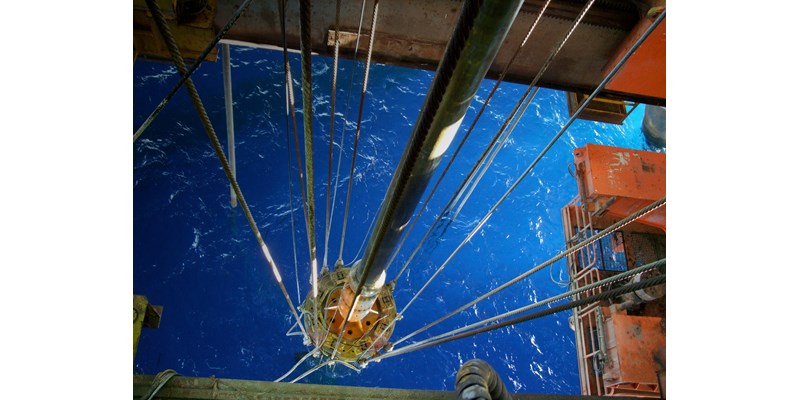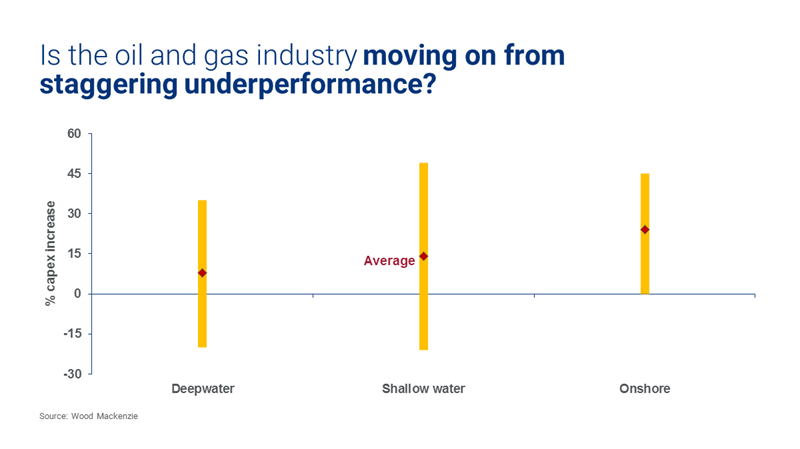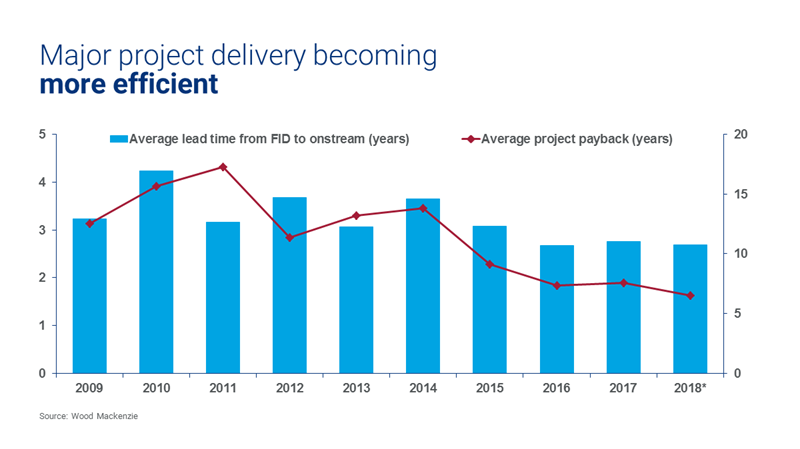1 minute read
Angus Rodger
Vice President, SME Upstream APAC & Middle East

Angus Rodger
Vice President, SME Upstream APAC & Middle East
Angus leads our benchmark analysis of global Pre-FID delays, and deep water developments.
Latest articles by Angus
-
The Edge
Why upstream companies might break their capital discipline rules
-
Featured
Upstream oil & gas regions 2025 outlook
-
Opinion
How to make upstream licensing work
-
The Edge
What’s driving the upstream revival in Southeast Asia?
-
Opinion
A two-decade decline in exploration is driving the need for carbon neutral investment in Australia’s upstream sector
-
Opinion
Asia Pacific upstream: 5 things to look for in 2024
Oil companies already had a history of bad project management, and then adding $100 oil to that was like pouring gasoline on a fire. ... Costs got out of control.
Angus Rodger, author of Better Project Delivery: Upstream's Value Opportunity, quoted by Bloomberg
Signs of improvement
The oil and gas industry has historically struggled to deliver big projects, but we're starting to see signs of improvement. We've moved on from massive blowouts and 10% average returns for projects. But how did the industry get to that point? Even before oil hit US$100/barrel there was evidence of inadequate delivery of major projects. The higher prices exacerbated the situation. Poor capital discipline and over-confidence in undertaking large-scale, highly complex projects meant the average project was delivered late and over budget.
Spending under scrutiny
Once the cushion of higher prices had disappeared, there was nowhere to hide the artificially padded quotes and undisciplined spending. Costs came under the microscope and with it greater corporate discipline in project screening and spend. Things started to improve and a number of projects were delivered successfully.
Signs of things to come
Fast forward to today, investors are keen to see whether the spate of recent successes, such as BP's West Nile Deep and Eni Zohr are the start of things to come or whether the industry will return to the days of bad discipline and poor project delivery. Boosting returns is the first step in showing investors that changes are here to stay. With the current projects, successful delivery should be possible, given most are less risky tiebacks, brownfield expansions and phased developments.
The real test will come when the next phase of more complex projects needs to be delivered. They include LNG in Mozambique, Arctic, PNG, Canada and FLNG. Deepwater oil in pre-salt Brazil, Guyana. Owowo, Anchor, SNE and Rosebank. Onshore oil in Uganda and the giant Tengiz Expansion in Kazakhstan. Will the industry be able to deliver these scale of projects with the same success? Time will tell.
Success factors
In the meantime, what can the industry do to give their projects the best chance of being delivered successfully? Our analysis points to six key factors that in most recent cases combined to create better execution.
- Ample spare capacity through the supply chain, leading to better performance and lower costs. For example, in some basins – Gulf of Mexico, pre-salt Brazil – drilling efficiency has improved dramatically.
- Examples of service sector collaboration and alignment on contracts, albeit mostly in Northern Europe to date.
- Improved project management, helped by the downturn and activity cuts. Companies have more people looking at fewer things, while under-utilised service companies can offer their 'A-team' for each major contract.
- Greater corporate discipline. Tougher pre-FID screening and more stringent hurdle rates have increased attention on execution and cost control.
- More pre-FID planning. More contracts are 'signed and sealed' pre-sanction, often with preferred partners versus putting everything out to bid.
- Reduced scope. One of the biggest factors that can explain the turnaround is the switch to smaller projects compared with those sanctioned between 2009 and 2014.
Watch this video of Angus Rodger, author of the Better Project Delivery: Upstream's Value Opportunity insight, as he goes into more detail on the six elements above.
Download a sample of the report to:
- Learn more about the industry's history of poor project delivery
- Find out why and how this has changed
- Explore whether improved project delivery is likely to continue









